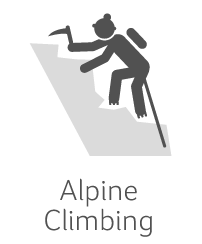
Kilimanjaro 5,895m
Assisting Guide
Weather: Very hot, very cold, very windy
Conditions on trail:
Dusty trial,lose scree in places,snow field on summit.
Group member: 11 Adults plus guides
Day 1 -31st July
Base to Shira Plateau and acclimatize trek
Day 2 -1st August Shira Plateau to Moir Hut.
Day 3 -2nd August
Moir Hut high trek and back to Moir camp
Day 4 -3rd August
Moir Hut to Lava Tower camp, excursion to Arrow camp.
Day 5 -4th August
Lava Tower to Karanga River via Barranco Wall. A horrendously long hike!!!
Day 6 -5th August Karanga River to Baraffu Hut
Day 7 -6th August
Midnight start Barafa Hut to summit and return via Stella Point. Brief rest then descend to Millennium Camp.
Day 8 -7th August
Millenium camp to Mweka Gate. Return to base by bus.
Kilimanjaro via the Shira route, much better chance for acclimatization and consequently summit. Plus it was as full moon final push to the top.
Most information on the trek is available from plenty of web sites, but here's few tips that weren't mentioned.
A duvet jacket with a hood is an essential, some of the trekking companies have it down as a luxury. When the sun goes down It's dam cold even at 4,700m, especially at the Lava Tower camp
Definitely pack 2 toilet rolls each! and wet wipes
Thermarest trek pillows, worthwhile investment
We took our own 4 season down bags, others who hired synthetic and fleece liners got cold.
The volcanic dust on Kili is as bad as the Khumbu, it gets everywhere. Use a 'Buff' or scarf to reduce the amount of dust getting into your lungs. The dust can trigger off a cough that could ruin your trek.
The Moir Camp was the flattest pitch for a good nights sleep. most other sites can be rough and angled, If you want a good nights sleep, be the first in your party to get to the campsite and bag the best pitch. Sounds selfish but if your suffering after a hard days trek, then good nights sleep makes all the difference. I should say here, if any member of the group looks as though they would benefit more than you from a good kip then offer them the best pitch.
We set off about midnight for the sunrise at Stella Point, we weren't going slow and i recon 11pm is a better start time.
Water! When the water that the porters bought with them from there base runs out, they use the available water from the mountain, this i was advised, is safe to drink. The mountain water can taste quite sulphury, you can get flavour tablets that help mask the taste.
Turning your sig bottles upside down and keeping them in a sock in your bag, means they don't freeze up so easily at 5,000 metres. Even the insulted Platypus hoses freeze up fret a while.
Diamox! the big question, do i need to take it? All in our group were relatively fit and well prepared for the trek, only 2 out of the 10 in our group (as far as i know) did not take or need Diamox for any part of the trip. At about 4,500m I started taking 1 tablet 250mg a day, half in the morning and half in the evening. Having taken it previously in Nepal i was used to the mild side effects of tingling fingers and wanting to pee, others strangely had tingling in some more unusual places!!! Dimaox is one of the key drugs used for combating the serious effects of AMS (Acute Mountain Sickness), one argument is that if you start using Diamox before you actually really need it then that's one drug they cant use again. Some of the mild headaches trekkers get early on, can be put down to dehydration. Even on an easy day we were drinking at least 4-6 litres of water. Everyone reacts differently to altitude, so don't be surprised when the big fit guy starts feeling rough while the 20 a day smoker is feeling fine. The head guides on our trek kept a very close eye on everyone's health whilst on the mountain.
Trekkers taking the Shira route have a better option to 'Climb high and sleep low' so reducing the chances of developing AMS. The only drawback of the Shira is that you can get direct access to the Shira Plateau via 4WD this starts the trek off at around 3000m. In my opinion this is gaining height to quickly and invites the chances of starting off AMS, you would be better off starting the trek lower down on the Lemosho Trail around 2700m and picking up the Shira route later on the Plateau.
Try and co ordinate the picture session at the top so you don't get there the same time as another big group, it can get a bit fractious! Everyone's a bit tired and emotional, a punch up on the summit could put downer on the big moment. Believe me it happens.
Take as many pictures as you can, at and on the way to the summit, you will be very tired, the thought of stopping and snapping away seems to be the last thing on your mind.
They are building new ranger huts at Shira 2 and Barafu, though this does seem to be an awfully long work in progress.
Not lot to spend you money on, we just took US dollars, T Shirts 8-10 dollars, Kili beer 3 dollars, Kili airport has some good stuff. Take a bag of sweets for the kids
I would advise that the porter tipping ceremony at the end of the trek needs to be planned in advance when everyone's not quite so tired.
Barafu camp (last stop before the summit) sells Mars Bars & Snickers plus Coke at $4 bottle, this is a very pleasant surprise for most trekkers
Pole pole as they say
Camping
Area :
United Republic of Tanzania